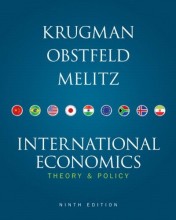Summary: The Art Of Continuous Change: ...
- This + 400k other summaries
- A unique study and practice tool
- Never study anything twice again
- Get the grades you hope for
- 100% sure, 100% understanding
Read the summary and the most important questions on The Art of Continuous Change: Linking Complexity Theory and Time-Paced Evolution in Relentlessly Shifting Organizations
-
1 Introduction
This is a preview. There are 4 more flashcards available for chapter 1
Show more cards here -
What does the punctuated equilibrium model of change hold?
It assumes that long periods of incremental change are interrupted by brief periods of discontinuous, radical change. -
What is the central argument of the punctuated equilibrium model?
Change oscillates between long periods of stability and short bursts of radical change that fundamentally alter an industry. -
What is the mismatch with practice?
For many firms, change is not the rare, episodic phenomenon described by the punctuated equilibrium model but, rather, it is endemic to the way these organizations compete. -
2 Findings
This is a preview. There are 3 more flashcards available for chapter 2
Show more cards here -
2.1 Improvising in the Present
This is a preview. There are 1 more flashcards available for chapter 2.1
Show more cards here -
Why do some firms have successful product portfolios while other not?
Neither organic nor mechanistic structure was the answer. A balance is needed between mechanistic and organic by combining clear responsibilities and priorities with extensive communication. Rather than just communicate, successful managers combine limited structure (in the form of clear responsibilities, priorities and meetings) with extensive interaction and freedom to improvise current products. -
Why does limited structure work?
- It’s highly motivating.
- Limited structures help people to make sense of a fast-changing environment.
- The combination of clear responsibilities and priorities coupled with extensive communication lets developers improvise.
-
On which 2 key properties does true improvisation rely?
- Performers intensively communicating in real time with one another
- Doing so within a structure of a few, very specific rules.
- Performers intensively communicating in real time with one another
-
2.2 Probing into the future
This is a preview. There are 2 more flashcards available for chapter 2.2
Show more cards here -
How do successful managers explore the future?
By a wide variety of low-cost probes/lenses -
Which low-cost probes/lenses do they use?
- Experimental products – These product probes were typically product options that were potentially useful in new markets. If successful, these experiments were incorporated into future generations of the core product.
- Futurists – They meet frequently with the management team to create possible visions of the future.
- Strategic partnerships
- Frequent meetings
-
Why do managers probe the future?
- Gives managers options for the futures (i.e. fast response to fast changing environment)
- Lowers the probability of being surprised (i.e. relying on one type of probe leaves a firm vulnerable to changes in other areas)
- Variety in the source (e.g. customers, suppliers, futurists) of probes beneficial to avoid blind spots
- Varieties enhance learning (e.g. learning by doing) about possible futures
- Gives managers options for the futures (i.e. fast response to fast changing environment)
-
2.3 Evolving from Present to Future
This is a preview. There are 5 more flashcards available for chapter 2.3
Show more cards here -
How do successful managers evolve from present to future?
Instead of leaving transitions to chance or rigidly avoiding transitioning at all, the data revealed that the managers of successful product portfolios created an almost seamless switch from one project to the next.
- Higher grades + faster learning
- Never study anything twice
- 100% sure, 100% understanding






























